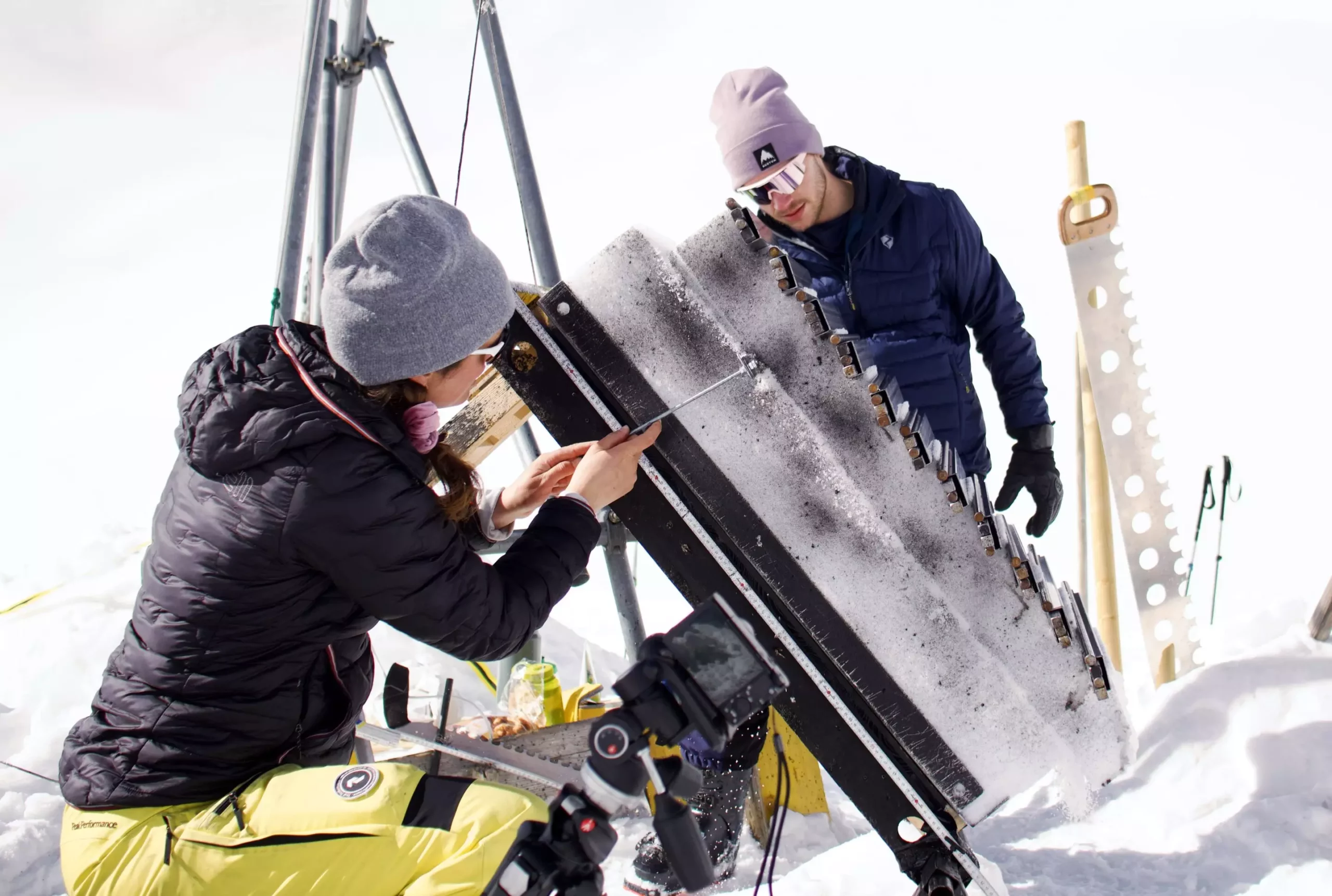Avalanches pose significant threats to both human life and natural ecosystems, yet many fundamental aspects of their dynamics remain elusive. A phenomenon dubbed “anticracking” has garnered the attention of scientists, as it highlights a critical mechanism that can precipitate devastating snow slides. Even a single individual traversing a snowy terrain can generate sufficient pressure to disrupt weak snow layers, igniting a cascading effect that leads to an avalanche. This article delves into recent groundbreaking research conducted by a team from TU Darmstadt, which aims to elucidate the mechanics underpinning this phenomenon and enhance our predictive capabilities for avalanche occurrences.
Led by Dr.-Ing. Philipp Rosendahl, this innovative study has emerged from the collaborative efforts of experts at TU Darmstadt, the WSL Institute for Snow and Avalanche Research SLF in Davos, and the University of Rostock. Their research focuses on evaluating the fracture toughness of weak snow layers in a controlled field setting, a goal that has remained largely untapped in prior research endeavors. As highlighted by Rosendahl, despite recent advancements in avalanche studies driven by experimental and theoretical analyses, the mechanical properties of weak snow layers have eluded comprehensive scrutiny.
Understanding the fracture toughness of weak layers is crucial for accurately predicting avalanche occurrences. This study introduces a novel experimental method that encompasses two significant advancements: a technique to create controlled anticracks in weak snow layers and the employment of a non-local mechanical model to assess energy balance at the onset of anticrack development. By unraveling the mechanical properties that facilitate snow layer collapses, the research team aims to address existing knowledge gaps that hinder avalanche prediction models.
To conduct their research, the team designed an experimental setup intended to simulate real-world conditions where weak snow layers experience both compressive and shear forces—a primary catalyst for avalanches. Utilizing snow blocks with embedded weak layers secured on a sled, the researchers applied varied angles and graduated weights to initiate collapses in the snow column. This sophisticated approach allowed for the first time the quantification of fracture toughness across a spectrum of loading conditions.
Intriguingly, findings from this study revealed that resistance to crack propagation is significantly more pronounced under shear-dominated conditions when compared to pure compression scenarios, defying initial expectations. Given that avalanches predominantly trigger under shear stresses in steep terrains, this revelation serves as a pivotal insight in understanding snow dynamics.
The implications extend beyond snow science; the fracture behaviors observed in snow layers also resonate with materials characterized by similar structural properties, such as sedimentary rocks and metal foams. The researchers successfully identified a power law that defines crack propagation thresholds under mixed loading environments, a framework likely applicable across various scientific disciplines.
Furthermore, the study raises critical awareness regarding the fracture behavior of porous materials under compressive loads—a concern that traverses multiple fields, including aerospace engineering. Lightweight structures in aerial applications often encounter similar loading conditions, making this research relevant to improving safety and functionality in engineered systems.
The team’s commitment to advancing avalanche research through a blend of experimental ingenuity and theoretical modeling marks a significant milestone in snow mechanics. As Dr.-Ing. Philipp Rosendahl posits, bridging the knowledge gap surrounding the fracture mechanics of weak snow layers enhances our prediction models, thus potentially saving lives and reducing ecological damage during avalanche events.
This pioneering research not only illuminates the complexities of snow layer dynamics but also inspires further investigations across geographical and material sciences. The transition from the abstract understanding of snow properties to tangible experimental results demonstrates the power of collaborative efforts in driving scientific progress. Moving forward, continuing to explore these intricate relationships may prove vital in managing the risks associated with avalanches in an era of climate uncertainty.


Leave a Reply